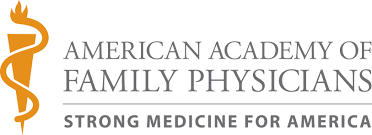Since passing my board exams in family practice in 1979 I have relied heavily on the American Academy of Family Physicians for continuing medical education via the American Family Physician and the AAFP home study programs. The AAFP prides itself on its evidence-based approach to medicine. In general, it delivers. But the recent FP Essentials Number 432 on “Chronic Pain Management” fell short. It recommended treating chronic pain with acupuncture, chiropractic, touch therapy, and S-adenosyl methionine (SAM-e), presenting them in a way that misled readers into thinking that the recommendations were based on good scientific evidence. They were not.
With 6,500 peer reviewed journals and over two million papers published every year, it is easy to find a study to support pretty much any point of view. John Ioannidis taught us that most published research findings are false, with preliminary studies frequently being overturned by larger, better follow-up studies. When evaluating the evidence for a treatment, it is not enough to find one or two positive studies. It is essential to also look for negative studies and for systematic analyses that weigh all the published evidence, and to put all the available evidence into perspective. The authors failed to do that.
Acupuncture
First, let me point out that the lead author incorporates acupuncture into her practice. This could be considered a conflict of interest. She obviously believes in it, which is bound to interfere with an objective interpretation of the published evidence. The personal experience of seeing patients improve after a treatment can be very compelling, but it is notoriously misleading. Medieval blood-letters saw patients recover after their treatments and never realized they were doing more harm than good. Surgeons who performed internal mammary artery ligations for heart disease had a 90% success rate, and it took two sham surgery experiments to convince them that the operation was actually useless. Only controlled studies can determine whether a treatment is more effective than placebo. As Mark Crislip says, “In my experience” are the three most dangerous words in medicine.
“Acupuncture” is not a single well-defined treatment. The authors themselves point out that it may refer to needles, acupressure, electrical stimulation, moxibustion, cupping, or herb placement; and it can actually refer to many more varieties such as esogetic colorpuncture (with colored light) and Tong Ren (tapping meridians on acupuncture dolls with a metal hammer). The references they cite are for more than one form of acupuncture, so their claim that “acupuncture” has been shown to relieve pain is so imprecise that it is virtually meaningless. They say it involves stimulation of specific points, but the highest quality research has shown that it doesn’t matter where you put the needles; stimulation of non-acupuncture points works just as well. It doesn’t even matter whether you use needles; one study showed that touching the skin with toothpicks worked just as well as individualized and standardized acupuncture. They say that acupuncture points are thought to be associated with unique electrical measurements, and that their stimulation results in a release of neuromodulators that can affect the central nervous system locally and systemically. Those claims are not supported by credible evidence. There have been many studies attempting to define a mechanism by which acupuncture might work, but those studies are flawed and inconclusive. They contradict each other instead of building on each other to develop a coherent body of evidence. Acupuncture has been shown to cause release of endorphins, but the same thing happens when you give patients a placebo sugar pill or when you throw a stick for a dog to fetch. There is no evidence that any effects of acupuncture are specific to acupoints, so it is premature to look for a mechanism to explain acupoints.
Edzard Ernst was the world’s first professor of complementary medicine. A former user of many kinds of alternative medicine, he set out to test which ones really worked. In Trick or Treatment: The Undeniable Facts about Alternative Medicine, the book he co-authored with Simon Singh, they concluded: “While there is tentative evidence that acupuncture might be effective for some forms of pain relief and nausea, it fails to deliver any medical benefit in any other situations and its underlying concepts are meaningless.” [emphasis added]
The FP Essentials authors cherry-picked studies showing that acupuncture is effective; they omitted other studies showing that it isn’t. When the results of studies conflict, the next step is to do a systematic review. In the case of acupuncture, the systematic reviews also conflicted. So Edzard Ernst and two Chinese colleagues did what was obviously the next step: a systematic review of systematic reviews of acupuncture for pain. They found that there were only four conditions for which more than one systematic review agreed: in three cases they agreed that acupuncture didn’t work; in the fourth, they agreed that it worked for neck pain. I ask you: if studies of a pain pill gave similarly heterogeneous results and indicated that it worked for pain in the neck but not for pain anywhere else in the body, would you choose to take that pill for pain, or would you suspect that something might have gone wrong with the positive studies?
When the Medical Letter reviewed acupuncture in 2006, they concluded:
Acupuncture alone has not been shown in rigorous, duplicated studies to benefit any defined medical condition.
The Center for Inquiry issued a policy statement on acupuncture in 2010. It said,
It is becoming increasingly clear that the placebo effect accounts for much of the optimistic research on acupuncture published between the 1970s and 1990s. With the development of sham needles during the past decade – needles which retract like stage knives [Streitberger needles] – researchers have since been able to more accurately assess the therapeutic effects of acupuncture. The result has been a complete unraveling of nearly all acupuncture claims…The bulk of recent research strongly tends towards the hypothesis that acupuncture’s positive effects are mainly due to a built-in expectation…
In June 2013, David Colquhoun and Steven Novella reviewed the history and the evidence for acupuncture for the treatment of pain in the journal Anesthesia and Analgesia. After thousands of trials and hundreds of systematic reviews, the evidence remains controversial, weak and unconvincing. All the evidence is consistent with exactly what one would expect to find if an elaborate placebo were tested. They concluded:
that the benefits of acupuncture are likely nonexistent, or at best are too small and too transient to be of any clinical significance. It seems that acupuncture is little or no more than a theatrical placebo.
Chiropractic
The authors said that weak evidence supports manipulation alone to relieve chronic neck pain. It is “weak” indeed! A Cochrane review showed that manipulation was no more effective than gentle mobilization, and that neither was effective alone, but only in combination with exercise. Any discussion of neck manipulation should include a warning that neck manipulation can result in a rare but deadly complication: stroke. These authors didn’t mention that.
Touch therapy
The authors describe touch therapy (including healing touch, therapeutic touch, noncontact therapeutic touch, and Reiki) as “a type of energy treatment in which practitioners place their hands on or above patients to manipulate their energy.” What energy? The only reference they provide is a Cochrane review that has been withdrawn from publication because it is out of date.
Touch therapies claim to manipulate a “human energy field.” Science can measure tiny energies down to the subatomic level, but it has never been able to measure a “human energy field” and we can only conclude that it is a myth and that practitioners who claim they can sense it and manipulate it are only fooling themselves. Studies of energy treatments are what I call Tooth Fairy Science. We can study how much money the Tooth Fairy leaves under the pillow in varying circumstances (family income level, birth order, whether the tooth is placed in a plastic bag or wrapped in tissue) and we can get reproducible data that is statistically significant. We can fool ourselves into thinking we have learned something about the Tooth Fairy, but we haven’t, because there’s no such thing.
The human energy field is no more real than the Tooth Fairy. Emily Rosa did a grade school science fair project to test experienced therapeutic touch practitioners to see if they could really sense the energy field they claimed to feel emanating from Emily’s hand. They could “sense” it reliably as long as they could see her hand, but when their vision was blocked by a screen, their guesses were no better than chance. Emily’s research was eventually published in the Journal of the American Medical Association. It took a child to show that the emperor had no clothes. It is ludicrous to study something before it has been shown to exist: clinical studies of energy medicine are inherently flawed and any positive results can be assumed to be false positives attributable to placebo effects and/or to the pitfalls of experimental design.
SAM-e
For SAMe, the authors cited an article from the NCCAM (now NCCIH) that showed only mixed results for SAM-e in osteoarthritis and said there was insufficient evidence for its use in other pain conditions. It even recommended “do not use SAM-e to replace conventional care.” They also cited a single positive clinical study from 2004, but didn’t mention a later Cochrane review from 2009 that concluded:
The current systematic review is inconclusive, hampered by the inclusion of mainly small trials of questionable quality. The effects of SAMe on both pain and function may be potentially clinically relevant and, although effects are expected to be small, deserve further clinical evaluation in adequately sized randomised, parallel-group trials in patients with knee or hip osteoarthritis. Meanwhile, routine use of SAM-e should not be advised. [emphasis added]
The Natural Medicines Comprehensive Database interprets the evidence as insufficient to establish effectiveness. Instead of rating SAM-e “Effective” for osteoarthritis, it rates it as only “Likely effective.” For fibromyalgia it rates it “Possibly effective.” It didn’t find any evidence to support its use in other pain conditions. There is no justification for recommending SAM-e for treatment of chronic pain in general.
Conclusion: I expected better of the American Academy of Family Physicians
The FP Essentials edition on Chronic Pain Management includes recommendations to treat chronic pain with acupuncture, chiropractic, touch therapy, and SAM-e. Those recommendations are not based on acceptable evidence. It is disappointing to see those alternative treatments misrepresented as evidence-based and recommended right along with conventional treatments that really are based on good quality evidence. I expected better of the AAFP.


